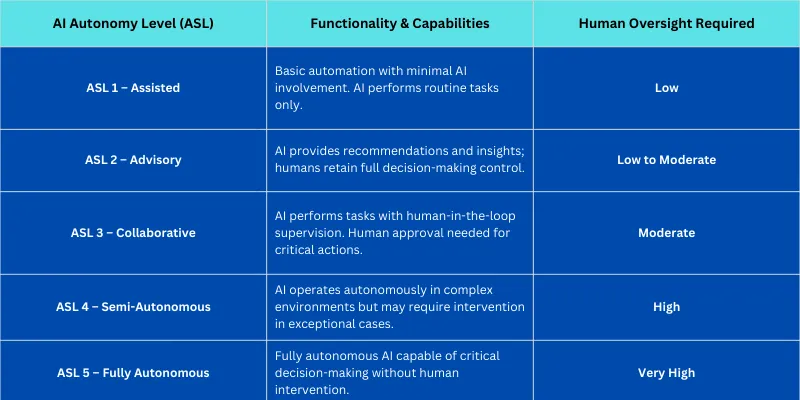Sales Team
Project quotes, partnerships, implementation

Artificial Intelligence (AI) is quickly becoming one of the most powerful tools in healthcare. From helping doctors detect diseases earlier to improving the way hospitals manage patients, AI is everywhere. Healthcare apps, telemedicine platforms, and custom healthcare software development projects are adopting AI at a rapid pace.
But there’s one big challenge: safety.
Unlike in other industries, mistakes in healthcare AI can have serious consequences. Imagine an AI recommending the wrong drug dosage or missing a tumor on a scan. These errors could risk lives. That’s why ensuring AI safety is no longer optional — it’s a necessity.
This is where the ASL Framework comes in. It focuses on three critical areas: Accuracy, Safety, and Liability. Together, they create a strong foundation for building AI systems that are reliable, trustworthy, and patient-friendly.
In this blog, we’ll:
AI is already a big part of modern healthcare.
All of these save time, reduce costs, and make healthcare more accessible.
However, AI is not perfect. If a system is not accurate or secure, it could mislead doctors or confuse patients. For example:
That’s why healthcare organizations need a structured approach like the ASL Framework to keep AI safe, transparent, and effective.

The ASL Framework stands for Accuracy, Safety, and Liability. It is designed to guide hospitals, clinics, and medical software companies in developing and using AI responsibly. Let’s break it down:
Accuracy in healthcare AI means the system must give correct, reliable, and useful results for doctors and patients. Even a small mistake can be harmful, causing wrong diagnoses or treatments. To stay accurate, AI needs proper data, regular updates, and careful testing before being used in real care.
Common Accuracy Issues
Solutions for Accuracy
For example, a hospital using AI to detect lung cancer in X-rays should test it on data from multiple countries, not just one region, to ensure accuracy across populations.
Even when AI delivers accurate results, safety measures are essential. In healthcare, safety makes sure AI helps doctors and nurses instead of creating new problems. Without safeguards, there’s a risk of misuse, errors, or over-reliance. Strong safety practices protect patients and build trust in AI-driven healthcare solutions.
Common Safety Issues
Solutions for Safety
Example:
Remote Patient Monitoring devices powered by AI can track heart rate or oxygen levels. But instead of alarming patients directly, these systems alert doctors, who then decide whether action is needed. This ensures patient safety while still using AI’s speed.
Liability means deciding who is responsible if AI makes a mistake. In healthcare, this is very important because patients and doctors need clear answers about accountability. Without clear rules, trust can be lost. Defining liability ensures fairness, protects patients, and builds confidence in using AI safely.
Common Liability Challenges
Solutions for Liability
For example, if an AI-powered app wrongly recommends surgery, liability should be clear: Was it the app developer, the hospital, or the doctor who used it incorrectly?
Hospitals and medical software companies can apply the ASL Framework by focusing on accuracy, safety, and liability at every stage. This means developing AI with diverse data, testing it in real settings, ensuring human oversight, protecting patient information, monitoring performance regularly, and defining accountability clearly to build trust. Hospitals and medical software companies can apply it step by step:
Custom healthcare software development plays a vital role in making AI safe and effective. Unlike generic tools, custom solutions are built for specific hospital needs, follow strict healthcare regulations, and integrate smoothly with existing systems. This ensures accuracy, security, and better patient outcomes through reliable AI-driven applications.
Benefits of custom solutions:
Healthcare app development services are key to ensuring AI safety in patient-focused solutions. These services design secure, user-friendly apps with strong data protection, clear AI explanations, and emergency response features. By prioritizing safety, healthcare app development services build trust, improve patient outcomes, and make AI tools reliable for everyday care.
Top Healthcare App Development Companies are already applying these practices by designing apps that balance AI intelligence with patient safety.
Medical software companies drive innovation in healthcare AI, creating tools that transform patient care. By applying the ASL Framework, they can ensure accuracy, maintain safety, and define clear accountability. This approach builds trust with hospitals, meets regulatory standards, and delivers reliable AI solutions that improve healthcare outcomes worldwide.
Key steps for leadership:
This not only builds safer AI but also strengthens trust between developers, healthcare providers, and patients.
The UAE is becoming a leader in healthcare AI. With government support and investments, smart hospitals and AI-powered telemedicine are growing rapidly. But at the same time, UAE regulators stress the importance of safety, transparency, and accountability.
By adopting the ASL Framework, hospitals and Telemedicine Platform Companies in the UAE can:
Globally, similar efforts are happening in the U.S., Europe, and Asia, proving that AI safety is a worldwide priority.
AI has the power to make healthcare smarter, faster, and more patient-friendly. But safety must always come first. The ASL Framework offers a clear path to building AI systems that are accurate, safe, and accountable.
If your organization is ready to build next-generation healthcare solutions, SISGAIN is here to help. As a leading healthcare software development company, we specialize in healthcare app development services that are innovative, secure, and fully compliant with global healthcare standards.
Let SISGAIN be your trusted partner in building AI solutions that improve healthcare while keeping patients safe.
Project quotes, partnerships, implementation
Open roles, referrals, campus hiring